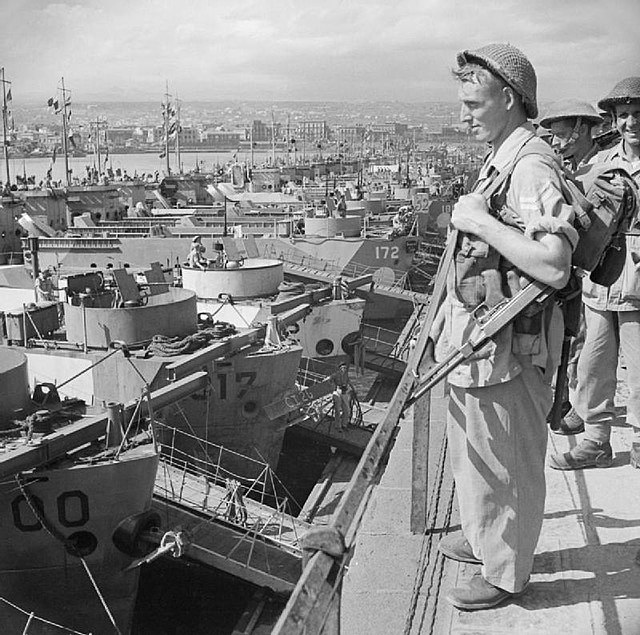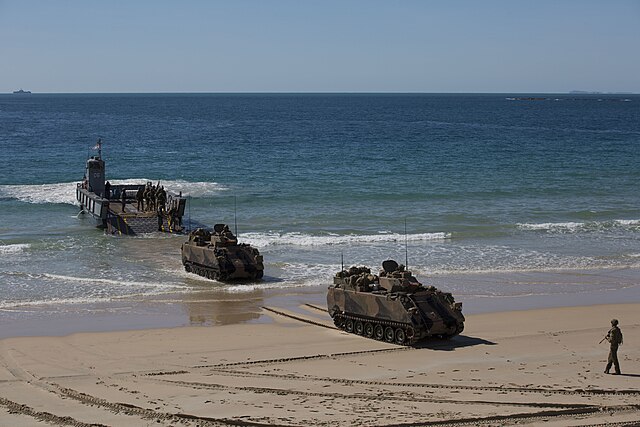The Allied invasion of Italy was the Allied amphibious landing on mainland Italy that took place from 3 September 1943, during the Italian campaign of World War II. The operation was undertaken by General Sir Harold Alexander's 15th Army Group and followed the successful Allied invasion of Sicily. The main invasion force landed on the west coast of Italy at Salerno on 9 September as part of Operation Avalanche, while two supporting operations took place in Calabria and Taranto.
Troops and vehicles being landed under shell fire during the invasion of mainland Italy at Salerno, September 1943.
Salerno D-Day plan
Men of the 2nd Battalion, Northamptonshire Regiment, part of 17th Brigade, wait to board landing craft at Catania for the invasion of Italy, 2 September 1943.
Lieutenant General Mark Clark on board USS Ancon during the landings at Salerno, Italy, 12 September 1943.
Amphibious warfare is a type of offensive military operation that today uses naval ships to project ground and air power onto a hostile or potentially hostile shore at a designated landing beach. Through history the operations were conducted using ship's boats as the primary method of delivering troops to shore. Since the Gallipoli Campaign, specialised watercraft were increasingly designed for landing troops, material and vehicles, including by landing craft and for insertion of commandos, by fast patrol boats, zodiacs and from mini-submersibles. The term amphibious first emerged in the United Kingdom and the United States during the 1930s with introduction of vehicles such as Vickers-Carden-Loyd Light Amphibious Tank or the Landing Vehicle Tracked.
A Crusader tank landing on a beach from a Tank Landing Craft in a 1942 test
South Korean Type 88 K1 MBT comes ashore from an American LCAC in March 2007.
Two Australian M113s disembarking from a landing craft during a training exercise in 2019
The Bayeux Tapestry depicts the 1066 Norman invasion of England with a force of some 8,000 infantry and heavy cavalry landed on the English shore.








